10 Fun Facts about Aruba That Will Leave You Wanting More
Aruba is a fun-filled place full of amazing surprises. Read on to find out ten fun and surprising facts about Aruba, that One Happy Island that will always leave you wanting more
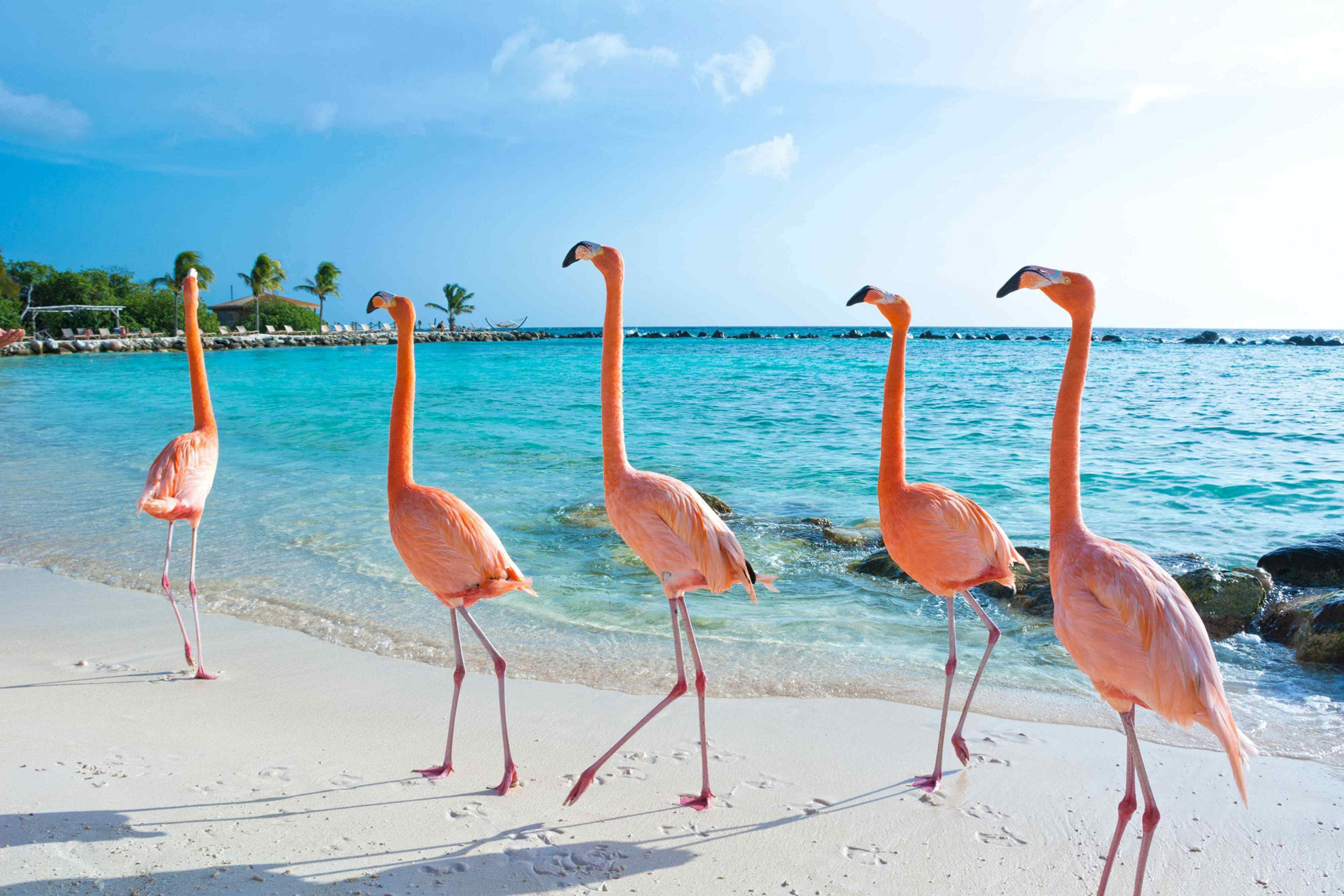
Ever wonder why everyone seems to love Aruba? The beautiful 70-square-mile Dutch Caribbean island is famous for its hospitality, fine sunny weather, even finer white-sand beaches, and high standard of living. And although the island itself may be tiny, its history and culture go deep. Here are ten fascinating fun facts about Aruba that will leave you wanting to book an all-inclusive stay at the finest five-star hotel on Aruba.
The Island of Aruba Was Once Known As “The Island of Giants”
Aruba’s history stretches back as far as several millennia. One of the interesting facts about Aruba is that the island has been inhabited by humans since the Pre-Ceramic Period (2500 BC – 1000 AD). Sometime during the early Ceramic period, around 1000 AD, the Caquetio Amerindians —part of the Arawak tribe that had migrated from the north coast of Venezuela some 15 miles away— established five large settlements where they produced corn and yucca.
The Caquetio were still thriving on the island when Amerigo Vespucci and Alonso de Ojeda landed on Aruba in 1499
The Caquetio were still thriving on the island when Amerigo Vespucci and Alonso de Ojeda landed on Aruba in 1499. These explorers, who colonized Aruba on Spain’s behalf, were impressed by the Coquetio’s large stature, as the people of Aruba were much taller than the Europeans. Hence, Aruba was formally baptized as “The Island of Giants.”
More Fun Facts About Aruba: It Was Also Briefly Known as “Useless Island”
Ever since the Spanish Crown first claimed the island, the Caquetio have been referred to as Amerigo Vespucci’s giants. But one of the lesser-known fun facts about Aruba is that the moniker “The Island of Giants” lasted only a decade. The Spaniards were unable to find gold, so they decided to rebaptize the island Isla Inútil, or “usesless island.” Apparently, Spanish explorers in those days were only interested in material riches and had little time for paradisiacal Caribbean beaches, which we now realize are as good as gold, if not better.
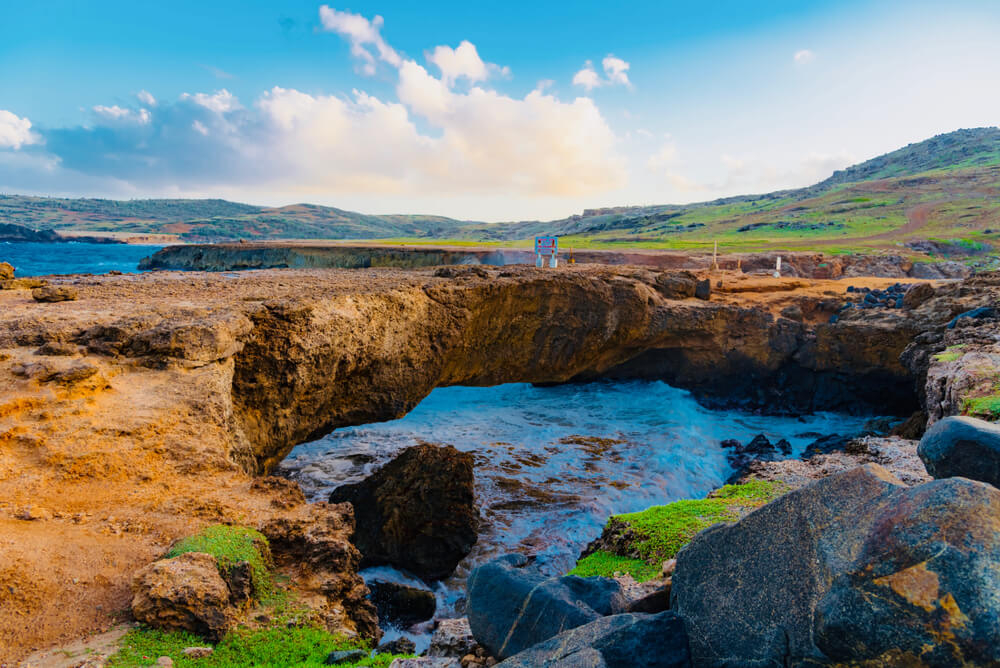
Arikok National Park covers 20% of the surface of the island of Aruba
You’ll Still Find Remnants of the Early History of Aruba
Remnants of the first people in Aruba are everywhere to be found on the island. Archaeologists have unearthed ceramic urns, pottery, jewelry, and other artifacts made by the Caquetio that date back to 1000 AD, and many of these are on display at Aruba’s National Archeological Museum, a must-visit for those interested in delving deeper into Aruba’s authentic culture and discovering many other fascinating facts about Aruba.
You’ll also find ancient rock formations and impressive pictographs etched on the walls centuries ago by the Arawak people at the Fontein Cave in the expansive Arikok National Park, one of the places in Aruba where you can combine outdoor adventures with learning about the earliest origins of Aruba’s history and culture.
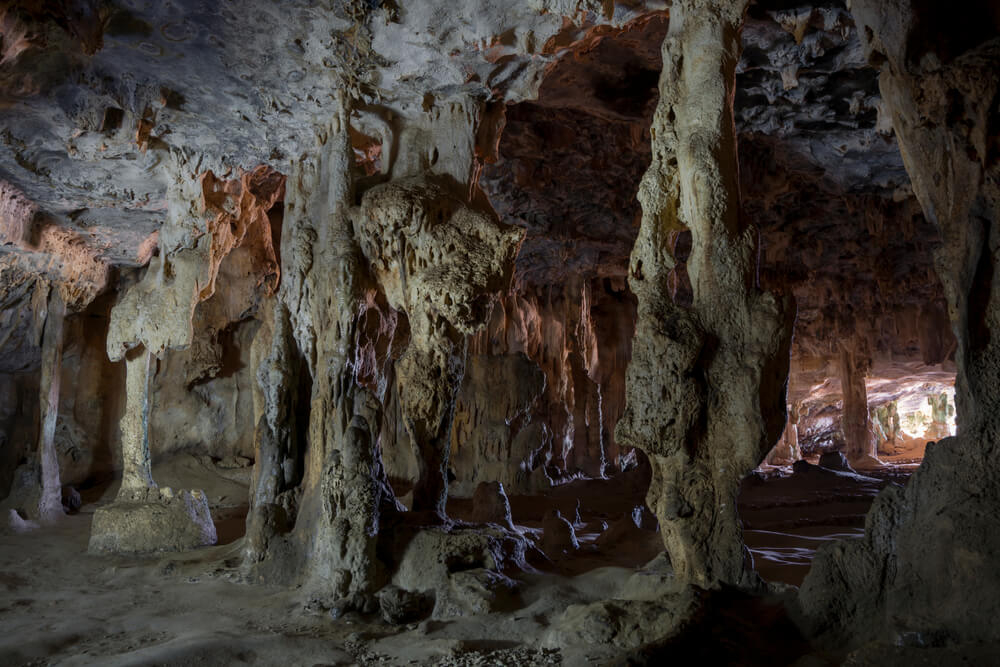
Check out the pictographs and rock formations in the Fontein Caves
Is Aruba Dutch? Yes, the Island Has Deep Dutch Heritage
Aruba is one of four countries that make up the Kingdom of the Netherlands—the other three being the Netherlands, Curaçao, and Sint Maarten. So, yes, Aruba is a Dutch island. But, of course, it hasn’t always been Dutch. The island was inhabited by the Caquetio Amerindians for thousands of years before falling under control of the Spanish Crown, who colonized Aruba for 137 more years before the Dutch ultimately occupied the island in 1636. But why were the Dutch interested in this so-called “useless island”?
Well, another interesting but little-known fact about Aruba is that the Dutch decided to occupy it due to its strategic location. At the time, the Netherlands and Spain were engaged in the Eighty Years’ War, and the Dutch needed to secure a naval base in the Caribbean. But they were equally interested in protecting their access to their salt supply on the South American mainland.
Save for a brief invasion by the British during the Napoleonic Wars, Aruba has been Dutch ever since 1636
Save for a brief invasion by the British during the Napoleonic Wars, Aruba has been Dutch ever since 1636. Every April, the island celebrates the birthday of King Willem-Alexander of the Kingdom of the Netherlands with a day full of sports, kite flying, and other fun activities.
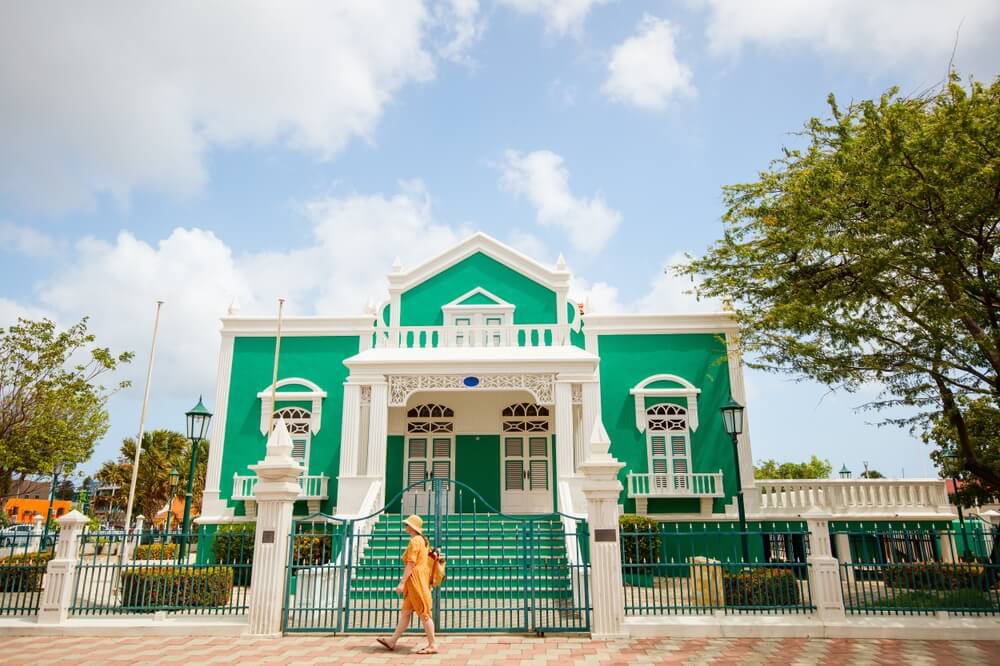
Old-school Dutch architecture in Oranjestad, where you’ll find some of Aruba’s oldest buildings
People in Aruba are Multilingual and Multicultural
Another curious bit of Aruba trivia is that the island has one of the most diverse populations in the Caribbean. Although the population is only about 112,000 residents, Aruba is home to people from 100 different nationalities. So, if you’re wondering what language is spoken in Aruba, the answer is that you can pretty much take your pick. And this is one of the most surprising facts about Aruba. As it happens, many people in Aruba speak up to four different languages: English, Dutch, Spanish, and Papiamentu. What is Papiamentu?
Papiamentu is a creole language spoken in Aruba that blends elements of Spanish, Portuguese, Dutch, English, French, and bits of African and Arawakan languages
Papiamentu is a creole language spoken in Aruba that blends elements of Spanish, Portuguese, Dutch, English, French, and bits of African and Arawakan languages. And it’s not spoken only in Aruba; you’ll encounter it in the other so-called ABC Caribbean islands (Curaçao and Bonaire). So, you may want to learn a few key Papiamentu phrases before your next all-inclusive vacation in Aruba. For instance, “Con ta bai?” means “How are you?”, “Bon, danki” means “Fine, thank you.” “Hopi bon” means “Very good.” And “Pasa un bon dia!” means “Have a nice day!”
Another must-learn phrase is “tres trapi,” which means “three steps” and is also the name of one of the most impressive beaches on the island of Aruba. The beach is perfect for swimming, diving, and spotting sea turtles!
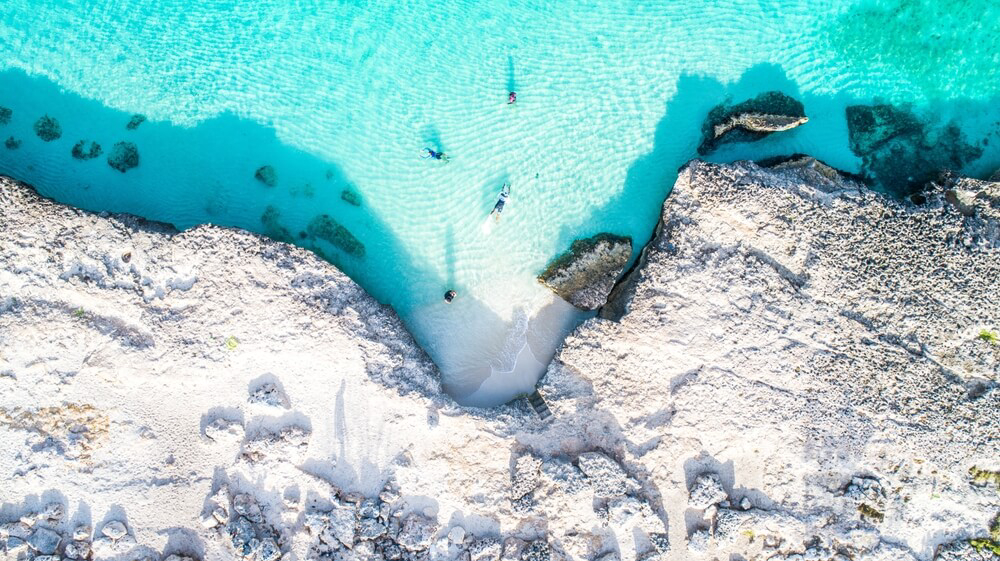
Tres Trapi beach, just north of Palm Beach, is one of the most impressive beaches on Aruba in the Caribbean
Things to Know About Aruba: The Island Is As Good As Gold
Never mind California, back in the 18th century Aruba had a Gold Rush of its own. In fact, Aruba’s history has been marked by gold prospectors. More than three million pounds of the shiny stuff was discovered on the island over the decades. That’s one of the curious facts about Aruba that 16th-century Spanish explorers would no doubt wish they had known.
For a glimpse of Aruba’s Gold Rush, visit the Balashi gold mine at the southern end of Frenchman’s Pass, one of Aruba’s hidden gems. Or head for Bushiribana, a smelter on the island’s north coast built by the Aruba Island Gold-Mining Company in 1872. The ruins of the gold mill are easily accessible and offer their own kind of ruggedly picturesque beauty. A visit to the island’s mines is a great way to learn about Aruba history and culture.
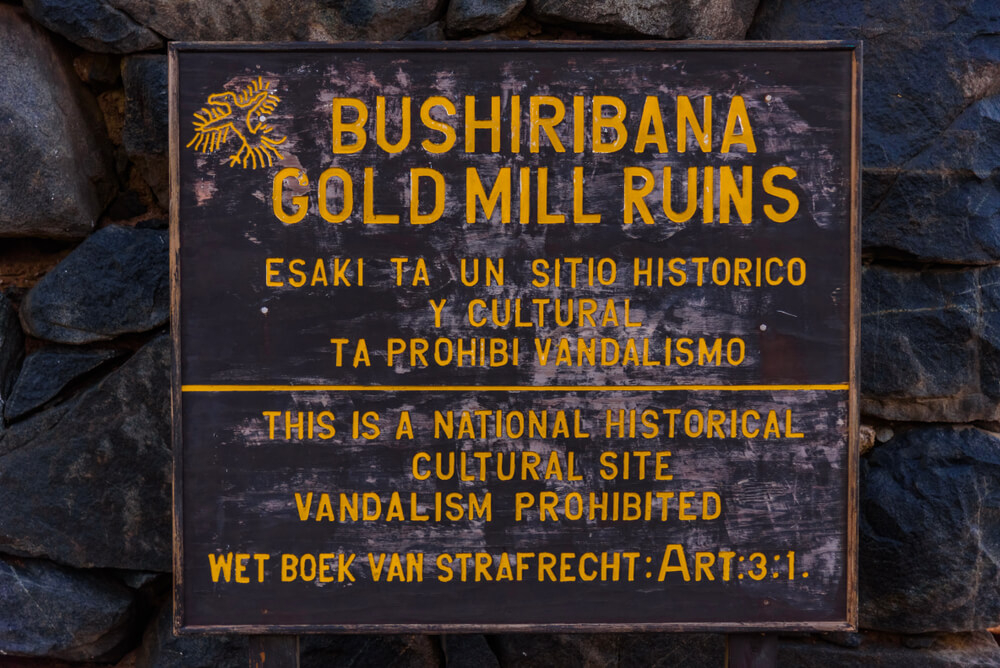
The ruins of the Bushiribana Gold Mill are a must-visit for those interested in Aruban history
The Island of Aruba Loves Aloe
Gold is no longer Aruba’s most precious natural resource. One of the most intriguing facts about Aruba is that, these days, the island’s key resource and number one export is aloe. The succulent was first introduced to Aruba in 1840 and, pretty soon, two-thirds of the island’s surface were covered with aloe vera.
Founded in 1890, Aruba Aloe is the world’s oldest aloe company and has been harnessing the restorative powers of this succulent plant for more than a century. Many island spas use locally grown aloe in their treatments; the plant is a powerful antioxidant and contains vitamins that are great for your skin.
One of the interesting things about Aruba is that you can take a guided tour of the Royal Aruba Aloe Museum & Factory. There, you'll see exactly how aloe is filleted and learn about the many benefits of aloe vera. You can also take a walking tour of the factory and visit the aloe cutting room and the testing lab.
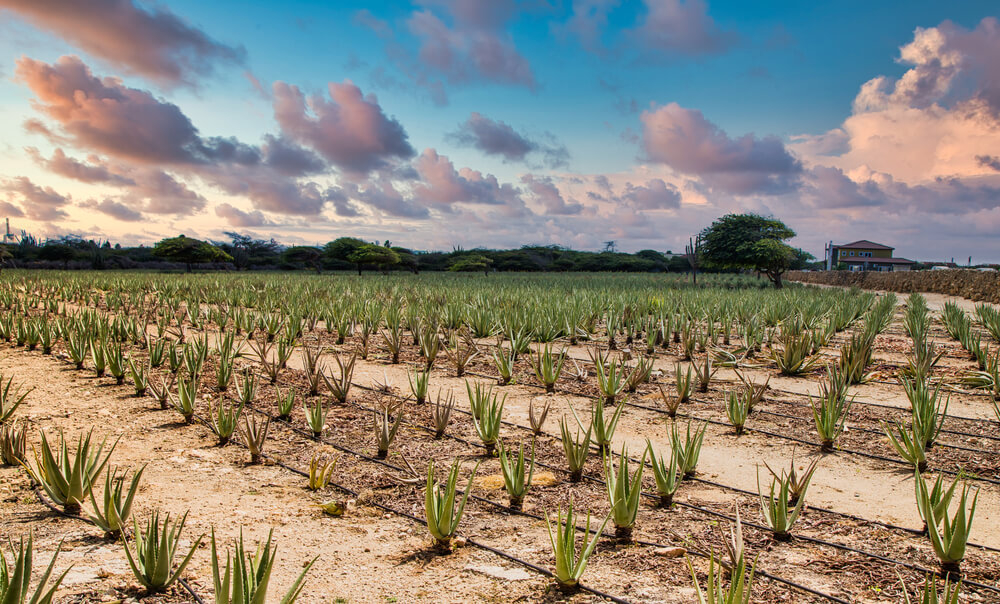
One of the things to know about Aruba is that it’s number one export is aloe
There’s Also a Wild Side to the Aruba Lifestyle
The people of Aruba are just one source of the island’s diversity. There’s also an array of amazing animals that you may well encounter during a vacation in Aruba. The island is dotted with animal sanctuaries that are the perfect place to get up-close-and-personal with some of nature’s most colorful characters—donkeys, butterflies, and even ostriches! And of course, the undersea world is filled with dazzling marine life, too. Scuba diving in Aruba will get you up-close-and-personal with turtles, lobsters and dolphins.
Another fun fact about the island of Aruba is that there its Butterfly Farm is a one-of-a-kind attraction that is home to hundreds of free-flying exotic butterflies. Its enormous, meshed enclosures are open year-round and help create the feeling of a lush tropical rain forest full of beautiful flowers and trees.
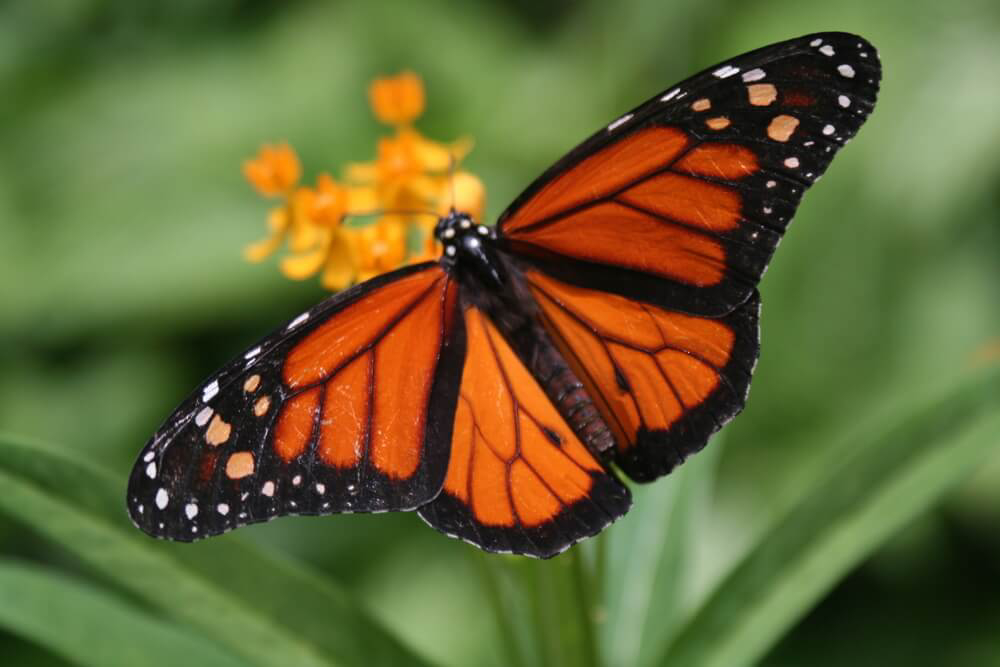
The Butterfly Farm on the island of Aruba is a key attraction for nature lovers
Aruba Culture Features Exquisite Eclectic Cuisine
As a true cultural melting pot, it may come as no surprise to learn that Aruban food is a mix of African, Dutch, Indonesian, Spanish, Portuguese, Indian, Chinese, and South American traditional fare, flavors, and cooking methods.
Seafood is fresh and plentiful, but you may be surprised to learn that one of the island’s signature dishes is a tripe soup known as sopi mondongo. Another traditional dish is keshi yena—a steamed or baked ball of cheese stuffed with spiced chicken or meat.
Another traditional dish is keshi yena—a steamed or baked ball of cheese stuffed with spiced chicken or meat
The dish is said to have been created from scraps of gouda cheese by enslaved Africans brought to Aruba by the Dutch in the 17th century. And make sure to leave room for dessert! Try a cocada, a type of sugar candy made with grated coconut, or dig into some Dutch pancakes. The amazing variety of the island’s cuisine is another of the surprising facts about Aruba that will leave you wanting more.

Leave room for dessert when you sample Aruba’s eclectic fare
Another Indispensable Bit of Aruba Trivia: The Weather is Ideal
Perhaps one of the most important facts about Aruba you should know is that the island has been blessed with nearly perfect weather. It’s temperatures hardly vary from month to month, with the average year-round in the low 80s. It’s steady trade winds add a pleasant breeze that also makes it the perfect destination for windsurfing and sailing. Plus, the island of Aruba gets more sunshine than any other Caribbean destination, and during the rainy season —which peaks in the month of November—showers tend to be brief, so your outdoor activities will hardly be affected.
And, in case you want to know which way the wind blows, all you have to do is take a look at the Divi Divi, or Watapana, tree, an indigenous species that thrives on the island of Aruba. Due to the north-east trade winds that continuously blow across the island, both (inland) Divi Divi trees and the similar Fofoti trees found on the beaches of Aruba invariably point southwest, so you can easily use trees to find your way around the island.
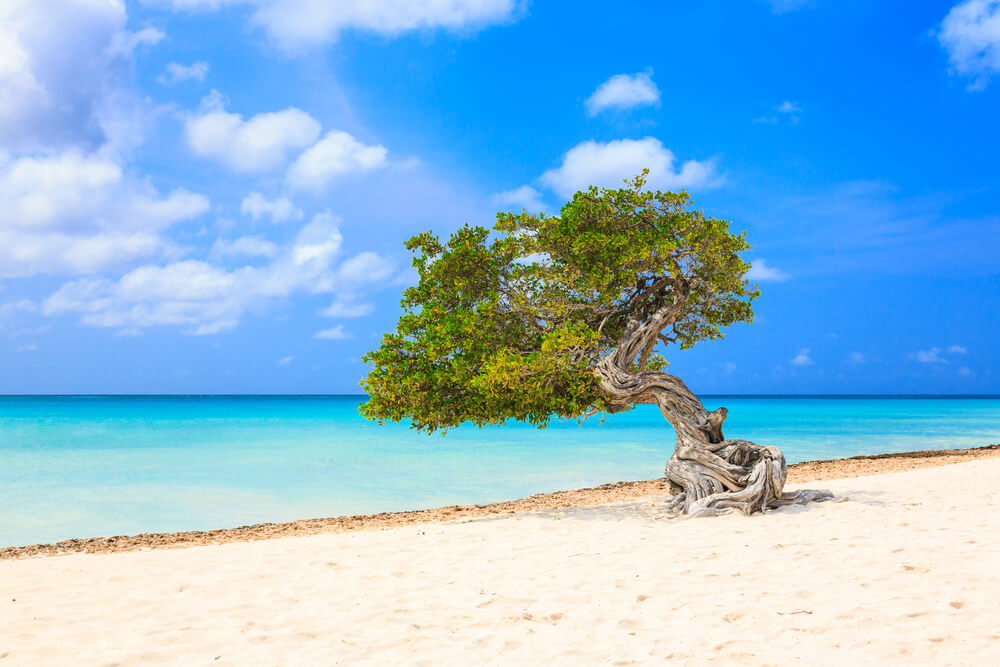
Divi Divi and Fofoti trees point southwest, so you’ll never be lost on the island of Aruba



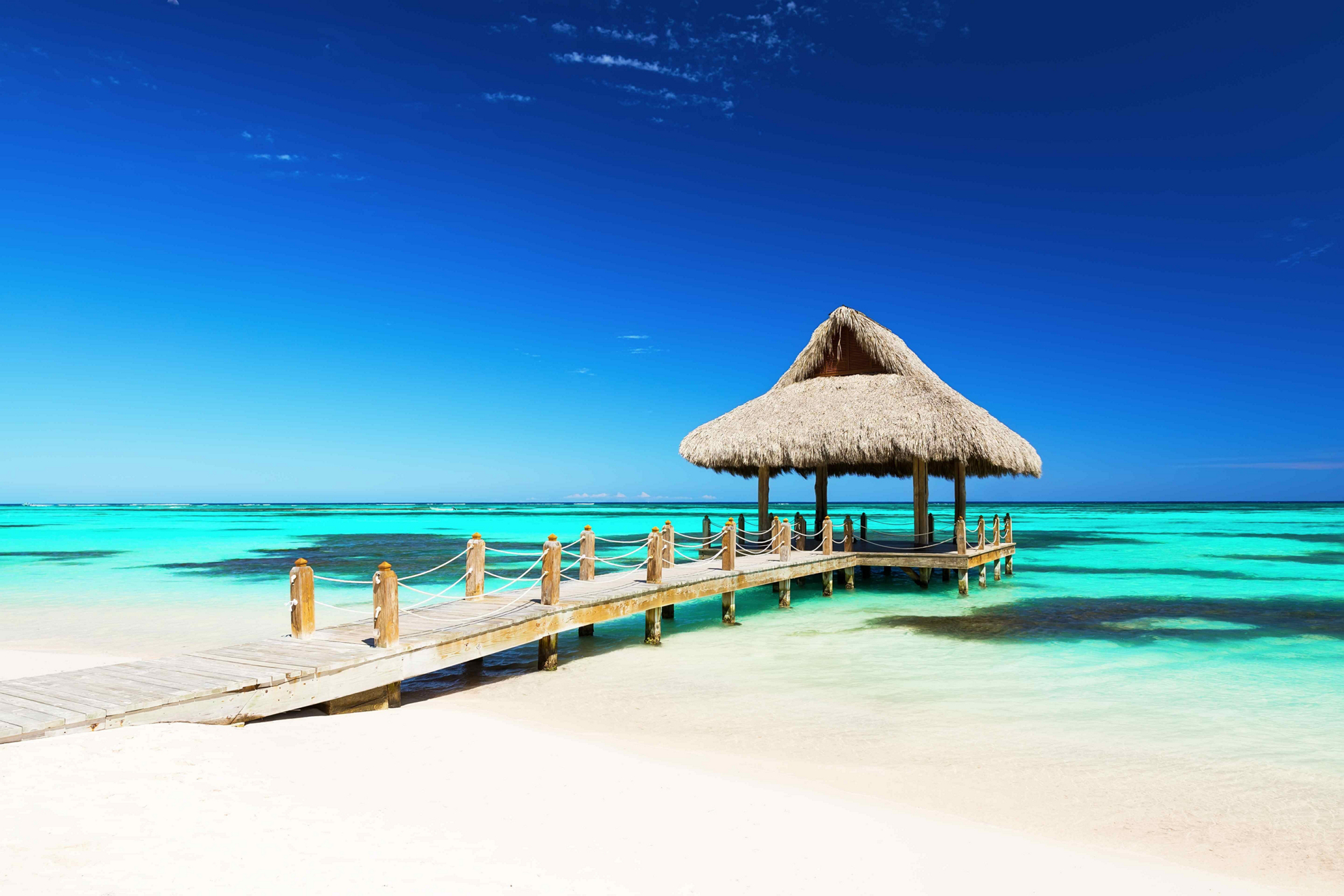
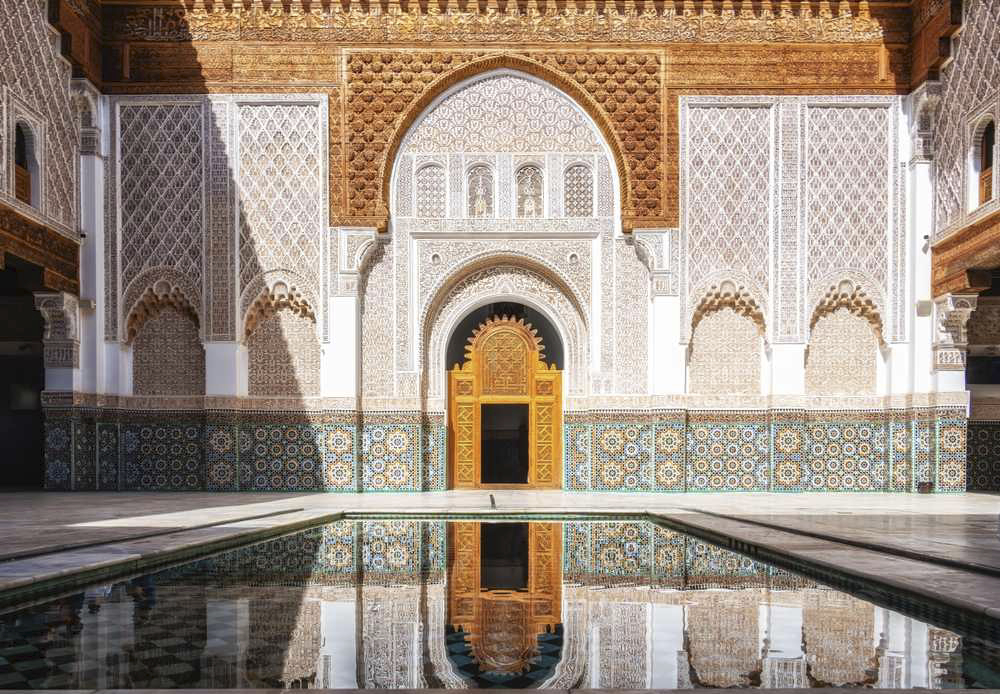
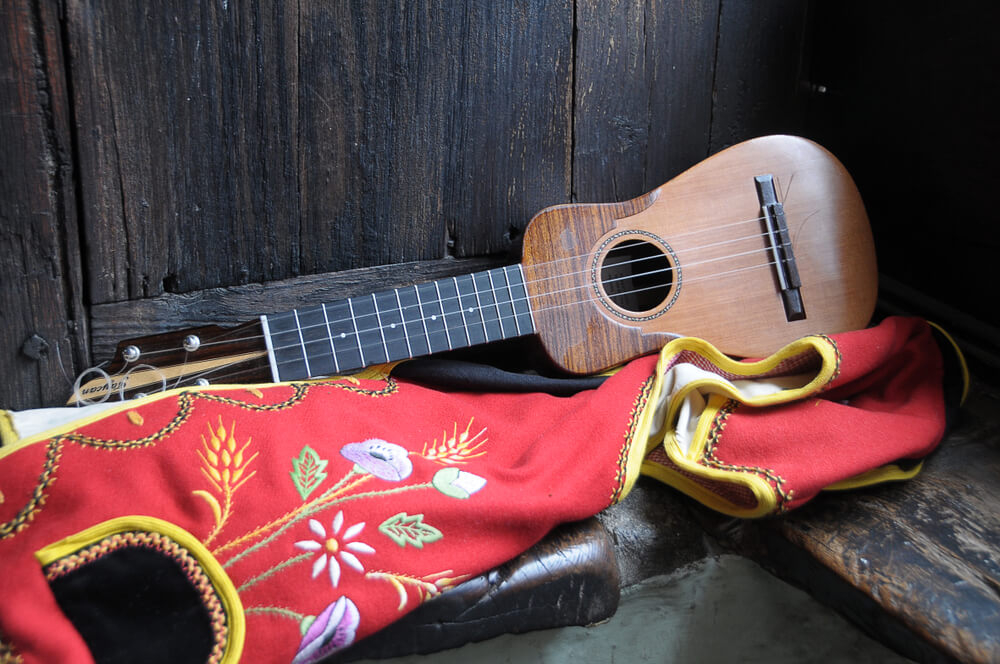
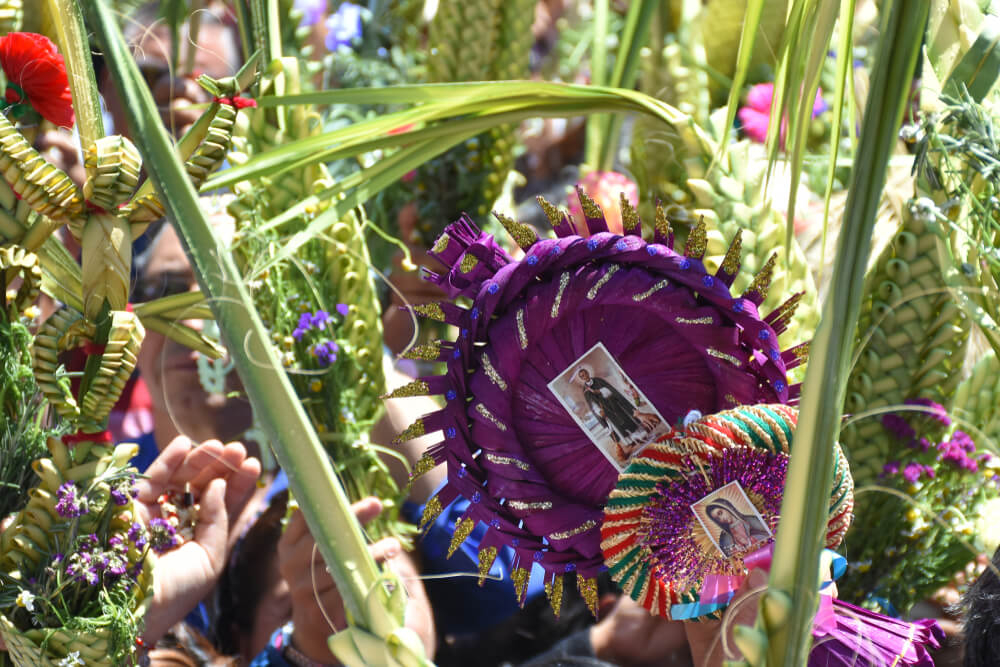

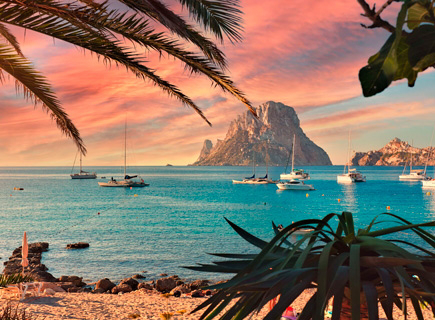
_435x320?&)
